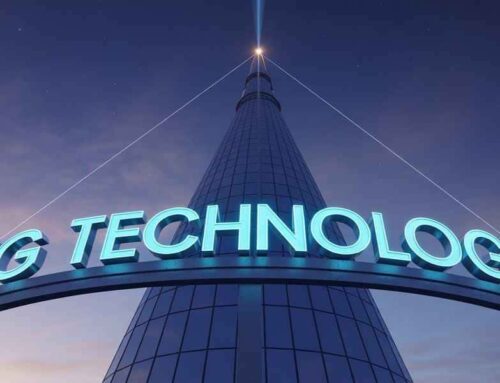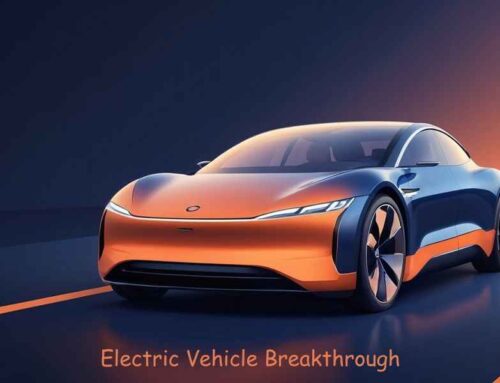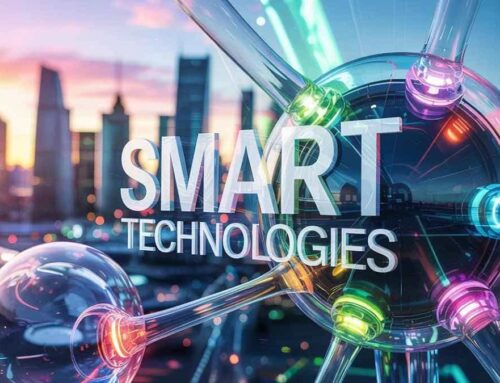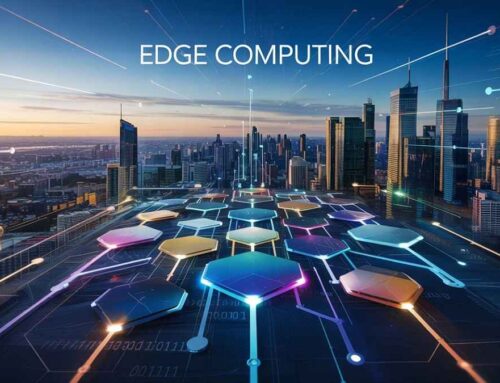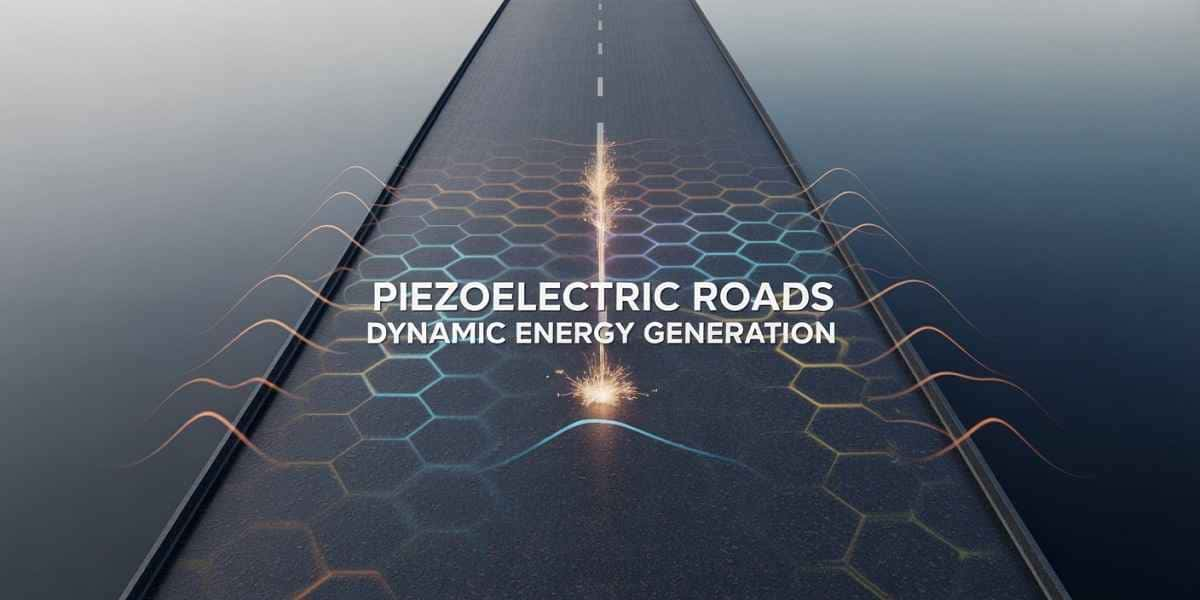
Have you ever wondered how piezoelectric roads could change the way we power our world?
Picture this: every time you drive to work, the road beneath your tires generates electricity. Yes, you heard that right. Piezoelectric roads are no longer a distant dream, they’re an exciting reality.
These smart roads harness the pressure from vehicles to produce energy. How? It’s simpler than you might think and it’s already happening in places around the globe. This isn’t just about roads. It’s about energy generation in a way that’s sustainable, innovative and right under our feet.
Let’s dive in. You’re probably curious about how piezoelectric roads work. They’re built with special materials, crystals or ceramics, that create an electric charge when stressed. When a car rolls over them, the pressure squeezes these materials. That squeeze generates electricity.
Small, yes, but multiply it by thousands of vehicles daily and you’ve got something substantial. This power can light up streetlights, charge electric vehicles or even flow back into the grid. Pretty cool, right?
But why should you care? Because this could transform how we think about energy. Roads are everywhere. We use them every day. What if they did more than just get us from point A to point B?
Imagine a highway that powers nearby towns. Or a city street that keeps traffic lights glowing. That’s the promise of piezoelectric roads, a quiet revolution in energy generation.
How Do These Roads Actually Work?
Let’s break it down for you. The magic happens in the piezoelectric effect. Certain materials, like crystals or specialized ceramics, have a unique property. Apply pressure and they produce an electric current.
It’s not new science, piezoelectricity was discovered in the 1880s by Pierre and Jacques Curie. What’s new is how we’re using it. In roads, these materials are embedded beneath the surface. A truck drives by. The road flexes slightly. Electricity flows. Simple, yet brilliant.
Each vehicle generates a tiny burst of power. Alone, it’s not much. But think about rush hour in a busy city, hundreds, maybe thousands, of cars per hour. That adds up fast. Engineers collect this energy with a network of tiny circuits, store it in batteries or send it straight to the grid.
The heavier the traffic, the more power you get. Ever thought your morning commute could be so productive?
Where Are Piezoelectric Roads Already in Action?
You might be asking, “Is this really happening or is it just a theory?” It’s real and it’s out there. Israel has been a pioneer, installing piezoelectric generators on highways since 2009. Their system captures energy from traffic and powers roadside lights.
California’s got skin in the game too. They’ve tested energy-harvesting roads on busy stretches, proving the concept works in high-traffic zones. Even Italy has experimented with piezoelectric sidewalks, yes, footsteps can generate power too.
These projects aren’t massive yet. They’re pilots, small-scale tests. But the results? Promising. One Israeli highway strip generated enough electricity to power 16 streetlights for a night. That’s not world-changing, yet. Scale it up and the potential grows.
Could your city be next? It’s worth thinking about.
What’s the Big Deal About Energy Generation Here?
Let’s talk impact. Traditional energy comes from coal, gas or big solar farms. Piezoelectric roads flip that script. They’re local. They use what’s already there, traffic. No need for sprawling wind turbines or sun-drenched deserts. Just roads doing double duty.
This could cut our reliance on fossil fuels. Less pollution. Cleaner air. And it’s renewable, traffic isn’t stopping anytime soon.
But there’s more. Energy generation through roads is constant where traffic flows. Solar needs sun. Wind needs breezes. Piezoelectricity? It just needs movement. Day or night, rain or shine, these roads keep producing.
Pair them with other renewables and you’ve got a steady, diverse energy mix. Doesn’t that sound like a win?
Can Piezoelectric Roads Handle the Real World?
You’re probably wondering about practicality. Are these roads tough enough? Good question. The materials, often crystals, ceramics or polymers, are designed to take a beating.
Heavy trucks, constant traffic, harsh weather, they’re built for it. Studies show they can last decades, much like regular asphalt. Some even suggest they’re more durable because of their flexibility.
Cost is another hurdle. Installing piezoelectric roads isn’t cheap, yet. The materials and tech are pricier than standard concrete. But here’s the kicker: prices are dropping.
As research advances, so does efficiency. New composites generate more power per square foot than early versions. Plus, the energy they produce can offset costs over time. Think of it as an investment. Wouldn’t you pay a bit more now for free power later?
What About the Environment?
Let’s get green for a second. Piezoelectric roads don’t burn fuel. They don’t spew carbon. They’re a clean energy source hiding in plain sight. Building them might use some resources, sure. But once they’re in place, their footprint is minimal.
Compare that to a coal plant belching smoke or a gas rig drilling deep. This is power production with a conscience.
And the look? You’d never know. These materials sit under the surface. No ugly panels or turbines, just a road. It blends in while doing its job. Could this be the future of eco-friendly infrastructure? It’s hard to argue against it.
How Could This Change Your Life?
Picture your daily routine. You drive to the store. The road powers the stoplights. You walk downtown. The sidewalk charges your phone. Energy generation becomes part of the background, seamless and unnoticed.
Municipalities could sell this power, lowering taxes or funding schools. Jobs pop up too, building, installing, maintaining these systems. It’s not just tech. It’s opportunity.
Ever thought about energy independence? Cities could rely less on distant power plants. Traffic-heavy areas, think New York, Tokyo, Mumbai, could generate huge amounts of electricity.
A famous thinker once said, “The future of energy is not in large power plants, but in the small steps we take every day.” Piezoelectric roads prove that point, one car at a time.
What Are the Challenges We Can’t Ignore?
Nothing’s perfect. Let’s be real. The tech’s still young. Scaling it up takes time, money and political will. Retrofitting existing roads? Tricky. New construction makes more sense, but that’s a slow process. And rural areas with light traffic won’t see the same benefits as urban hubs. Fair point, location matters.
Efficiency’s another puzzle. Early materials didn’t generate much per vehicle. Newer ones do better, but there’s room to grow. Researchers are on it, tweaking designs and testing composites. Patience is key. Are you willing to wait for a payoff that could reshape energy?
Could This Go Beyond Roads?
Here’s a fun thought: Why stop at roads? Piezoelectric tech is versatile. Sidewalks in busy plazas could power shops. Dance floors could light up clubs. Train tracks could energize stations.
Anywhere there’s movement, there’s potential. What if every step you took generated a spark? It’s not far-fetched, it’s already in the works.
Take Japan. They’ve tested piezoelectric tiles in train stations. Commuters’ footsteps create power for ticket machines. Small scale, big idea. The more we move, the more we produce. Isn’t that a beautiful cycle?
How Does This Stack Up Against Solar and Wind?
You might ask, “Why not just stick with solar or wind?” Fair. They’re proven, widespread and effective. But they’ve got limits. Solar panels need daylight and space. Wind turbines need gusts and open land. Piezoelectric roads don’t care about weather or scenery. They thrive where people are.
They’re not a replacement, think of them as a teammate. Solar powers your house by day. Wind kicks in when storms roll through. Piezoelectric roads hum along with every passing car. Together, they’re stronger. Doesn’t a mixed approach make sense?
What’s the Science Behind the Magic?
Let’s geek out a bit. Piezoelectricity comes from the structure of certain materials. Their atoms shift under pressure, creating a charge. In roads, this happens millions of times daily. Circuits capture it, convert it, store it.
The key is the material, some, like Lead (Pb) Zirconate Titanate (PZT), are champs at this. Others, like Polyvinylidene Fluoride (PVDF), are lighter and cheaper.
Traffic volume matters too. A quiet lane won’t cut it. But a freeway? Jackpot. Engineers optimize placement, layering materials where stress is highest. It’s precise, calculated and constantly improving. Ever wonder how much power your SUV could make?
Are These Roads Safe?
Safety’s non-negotiable. Good news: piezoelectric roads pass the test. The materials are stable, non-toxic and buried deep. No risk to drivers or wildlife. Some designs even boost grip, cutting skids in rain. Maintenance? Same as any road, patch it, seal it, done.
Worried about breakdowns? Don’t be. They’re built to last.
What’s the Global Potential?
Dream big with me. If London, Shanghai or Los Angeles went all-in, the energy output could be massive. Urban areas with gridlock, perfect candidates. Developing nations could leapfrog old-school power plants, building smart roads from the start.
By 2050, this could be standard. How much cleaner would our planet be?
Data backs this up. A Dutch study estimated a kilometer of piezoelectric road could power 500 homes yearly in a busy area. Multiply that worldwide. It’s not fantasy, it’s math. Ready for that future?
How Close Are We to Widespread Use?
We’re not there yet. Pilot projects are multiplying, France, Japan, the U.S., each refining the tech. Costs are falling as production scales. Efficiency’s climbing with every breakthrough. Experts predict mainstream use in 10-20 years. Sooner if we push. Are you excited yet?
What Can You Do About It?
You’re not powerless here. Talk about piezoelectric roads with friends. Bug your local leaders, ask for trials. Support companies investing in this tech. Small actions add up. Want your town to lead the charge? Make some noise.
Wrapping It Up
Piezoelectric roads are more than a gimmick, they’re a game-changer for energy generation. They turn traffic into power, blending sustainability with everyday life. Challenges remain, but the path is clear.
As we build smarter cities, these roads could light the way. Next time you’re driving, think: could this road power my world?
CTA
Spread the word. Tag your local representatives on social media and ask, “When will our roads start working for us?”
FAQs on Piezoelectric Roads and Energy Generation
Q1: What are piezoelectric roads?
A1: Piezoelectric roads are roads embedded with special materials, like crystals or ceramics, that generate electricity when pressure is applied. As vehicles drive over them, the pressure from the tires creates an electric charge, which can be harnessed as energy.
Q2: How do piezoelectric roads generate energy?
A2: These roads use the piezoelectric effect, where certain materials produce an electric current when stressed or compressed. When vehicles pass over the road, they apply pressure, generating small bursts of electricity. This energy is collected and can be used to power streetlights, traffic signals or even feed back into the grid.
Q3: Are piezoelectric roads already in use?
A3: Yes, piezoelectric roads are being tested and used in several countries. Israel has installed piezoelectric generators on highways to power roadside lights and California has conducted trials on busy road stretches. Italy has even experimented with piezoelectric sidewalks that generate energy from footsteps.
Q4: What are the benefits of piezoelectric roads?
A4: Piezoelectric roads offer a sustainable and renewable energy source by harnessing the constant movement of traffic. They can reduce reliance on fossil fuels, lower carbon emissions and provide a decentralized energy solution. Additionally, they can be integrated into existing infrastructure without altering the landscape.
Q5: How much energy can piezoelectric roads produce?
A5: The energy output depends on traffic volume. In high-traffic areas, a single kilometer of piezoelectric road could potentially power hundreds of homes annually. For example, a Dutch study estimated that one kilometer of such a road could generate enough electricity to power 500 homes per year in a busy urban setting.
Q6: Are piezoelectric roads durable?
A6: Yes, the materials used in piezoelectric roads, such as specialized ceramics or polymers, are designed to withstand heavy traffic and harsh weather conditions. Some studies suggest they may even be more durable than traditional asphalt due to their flexibility.
Q7: What are the challenges of implementing piezoelectric roads?
A7: The main challenges include the high initial cost of materials and installation, the need for further technological advancements to improve efficiency and the fact that they are most effective in high-traffic areas. Retrofitting existing roads can also be complex, making new construction a more viable option.
Q8: Can piezoelectric technology be used beyond roads?
A8: Absolutely. Piezoelectric technology can be applied to sidewalks, train tracks, dance floors and other surfaces where movement occurs. For instance, Japan has tested piezoelectric tiles in train stations, where commuters’ footsteps generate power for ticket machines.
Q9: How do piezoelectric roads compare to solar or wind energy?
A9: Unlike solar or wind energy, which depend on weather conditions, piezoelectric roads generate energy consistently as long as there is traffic. They complement other renewable sources by providing a steady energy supply in urban areas, making them a valuable addition to a diversified energy mix.
Q10: When will piezoelectric roads become widely used?
A10: While still in the early stages, pilot projects are expanding globally and experts predict mainstream adoption within 10-20 years as costs decrease and efficiency improves. Public support and investment in smart infrastructure could accelerate this timeline.

